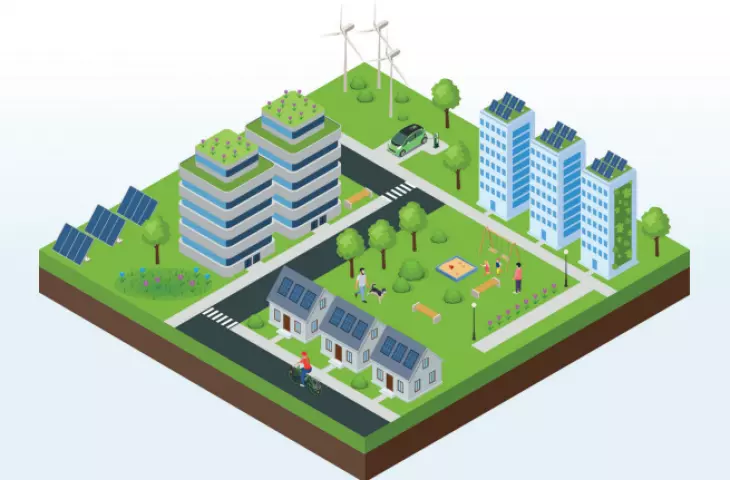We most often associate energy efficiency with visualizations of new low-emission housing estates honed to the extreme - this notion should be replaced by broader thinking - about modernizing what we already have.
what's it all for?
As part of our #ReportThursday series, we present documents, reports and guides on architecture, cities and local government that are certainly worth publicizing and promoting. This week we take a look at the document "Ecological Guide for Multi-Family House Managers" prepared by the Institute for Sustainable Development.
Energy efficiency requirements will evolve over time
© Ekomalopolska
As Paulina Duch-Zebrowska and Kuba Glaz pointed out in the pages of A&B, "A warm quilt is not enough". Modernizing the housing stock from the communist era and beyond is an extremely difficult topic. As much as 36 percent of greenhouse gas emissions are generated by buildings. A long-term strategy for thermal modernization could mean working on more than 7.5 million buildings in Poland.
building life cycle
© Ekomalopolska
Energy efficiency is already becoming a weapon in the hands of climate denialists and Euroskeptics, who are turning established standards into a narrative of freezing homes and taking away freedoms. We are avoiding not only the global issue, but also the local context - lowering the price of bills and reducing the consumption of raw materials that we mostly export (which affects security).
Decisions today lie primarily with decision-makers in local governments and housing cooperatives, but expanding knowledge is equally important - without it, it is difficult to agitate and introduce positive changes. So what can be done today and where to get the money for it?
the report also includes solutions for tenants
© Ekomalopolska
Thermomodernization, "RES-ization" or automation?
The cheapest and cleanest energy is that which has not been used. Therefore, as specialists point out, any action should start with an audit - the introduction of appropriate heat meters and more frequent inspections of heating and electrical installations. This is because very often energy is used not where it should be.
goals of thermomodernization
© Ekomalopolska
After the audit, there are plenty of solutions to introduce - replacing the installation, installing thermostatic valves and heads, automatic thermal balancing of circulating systems, or replacing old equipment such as elevators and light bulbs with energy-efficient ones.
building management system
© Ekomalopolska
In addition to low-cost solutions, the authors of the guide also show how to conduct and what to avoid with high-cost thermal modernization investments. From proper wall insulation to the roof, windows and heat selection. The guidebook also includes references to examples from Poland, which have relied on thermomodernization of multifamily buildings with prosumer energy development.
example of investment presented in the guidebook
© Ekomalopolska
place of water, place of greenery
The guidebook is not only about energy solutions, but also about water and greenery. Here you will find advice on setting up water reservoirs and putting gray water into circulation, green walls and roofs, vertical gardens or flower meadows. There is also no shortage of waste management solutions, which are treated here in very truncated terms.
The possibility of using gray water
© Ecomalopolska
where to look for help?
While the brochure itself is a prelude to further search for solutions, it can help you find your way through the meanders of proposals, directions that can be applied to the housing stock of Polish cooperatives. In addition, at the very end there is a list of financial programs, supporting the realization of the goals mentioned in the guide.
examples of solutions based on greenery
© Ekomalopolska
Thermomodernization and renovation will be terms that will be pronounced by all cases - cooperatives that bet on these solutions sooner will create better conditions for residents than those that sleep through all the programs.
The guide also popularizes the basic issues of using the sewage system
© Ekomalopolska
The guide is available on the Ekomałopolska program website.













































